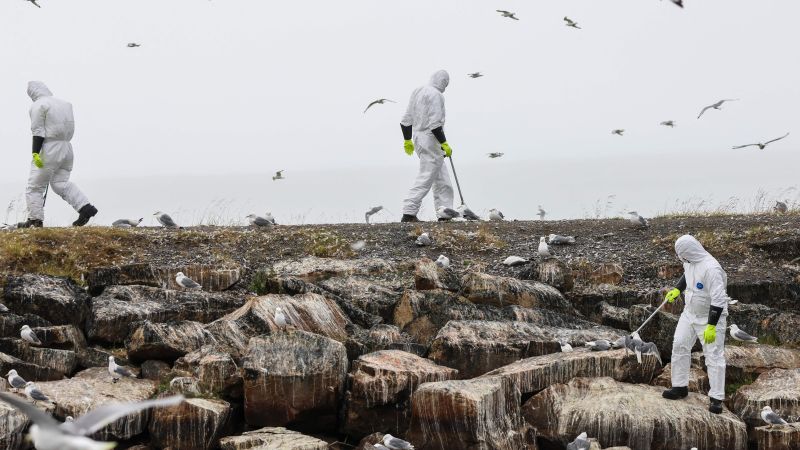In the summer of 2022, Mark Naniot, co-founder of Wild Instincts animal rescue in Wisconsin’s Northwoods, remembers facing a series of challenges that made it feel like the “summer from hell.” Naniot and his team spent the season caring for sick and injured animals while contending with multiple infectious diseases, including Covid-19, chronic wasting disease in deer, and H5N1 bird flu.
“H5N1 makes mutations, in the sense of making errors copying its genome, at a higher rate than a coronavirus like SARS-CoV2,” said Dr. Jesse Bloom, a computational biologist at the Fred Hutch Cancer Center in Seattle. The virus has infected millions of wild and farmed birds and has been found in at least 26 different species of mammals, including cows, cats, and house mice.
At Wild Instincts rescue, Naniot encountered a heartbreaking situation when baby foxes brought in were found to be infected with H5N1. The fox kits displayed severe seizures, a symptom of the virus that Naniot had not previously seen in a mammal. Despite the virus’s known infections in nearly 900 people over the past 30 years, human cases have been sporadic and usually self-limiting. However, more than 50% of infected individuals have died from H5N1.
Recent experiments by the US Centers for Disease Control and Prevention using ferrets have shown that the strain of H5N1 currently circulating in the United States is unlikely to transmit through the air. The CDC plans to repeat these tests to further understand the virus’s transmission potential.
While the number of human infections with H5N1 has been low in the current outbreak, health experts warn that the virus could quickly mutate and become more infectious to humans. Dr. Rick Bright, an immunologist, emphasized the importance of understanding that viruses can change rapidly and adapt to spread more easily.
Dr. Erin Sorrell, a virologist at the Johns Hopkins Center for Health Security, explained that human immunity to seasonal flu strains may not necessarily protect against exposure to an H5 virus. The CDC’s ferret study also revealed that H5N1 has been fatal in all infected ferrets, unlike seasonal flu strains that typically do not kill the animals.
As the world continues to grapple with the challenges posed by H5N1, scientists and health experts are closely monitoring the virus’s evolution and potential threat to human health.












